Moto G7 Plus Review
Moto G7 Plus Review
A focus on performance and photography at a low cost
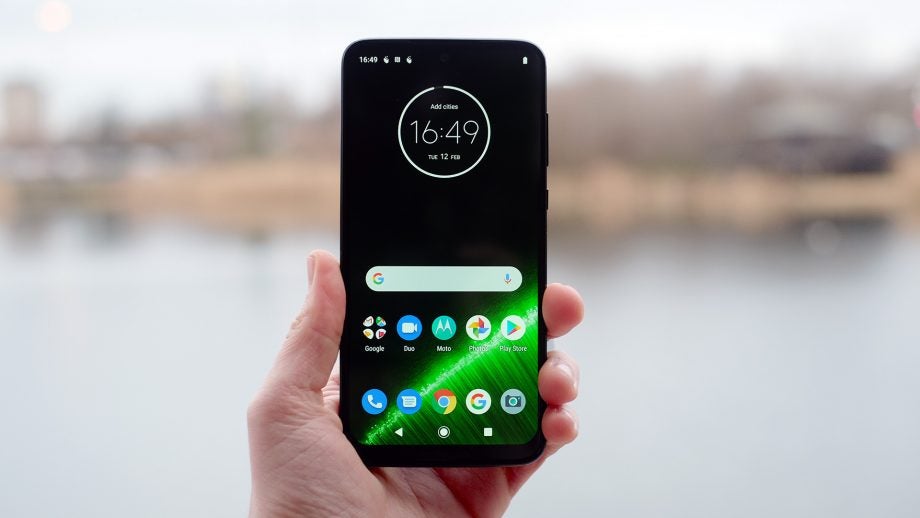
Verdict
With an improved camera, design and hardware the Moto G7 Plus is one of the best sub-£300 smartphones available. It may not be a giant leap forward, but it is easy to recommend to buyers on a budget. But if you only have very basic needs then the Moto G7 Power could be a better, even more affordable, option.
Pros
- Good cameras, front and back
- Solid value
- Classy hardware design
Cons
- Deep notch
- Dynamic range and night shooting are not best-in-class
Key Specifications
- Review Price: £269
- Display: 6.2-inch FHD+ screen
- Processor: Snapdragon 636 CPU
- Memory: 4GB RAM
- Storage: 64GB, microSD
- Camera: 16-megapixel main sensor with 5-megapixel depth sensor rear camera, 12-megapixel front camera
- Battery capacity: 3000mAh
- OS: Android 9
What is the Motorola Moto G7 Plus?
The Motorola Moto G7 Plus is a great value smartphone that offers buyers elements of higher-end handsets without a sky-high price. This is an impressive achievement as it lives in a world of increasing competition from Chinese brands like Xiaomi, Honor and Huawei. There are better buys for certain uses, of course. The Moto G7 Power lasts far longer, the Xiaomi Mi 8 Lite is even more value-packed in part. But the Motorola Moto G7 Plus is hard to beat at the price if you want a tasteful phone you can rely on.
What this phone isn’t, is the Moto G7. That’s an entry level phone aimed at a particularly budget conscious buyer. Read our Moto G7 review for more.
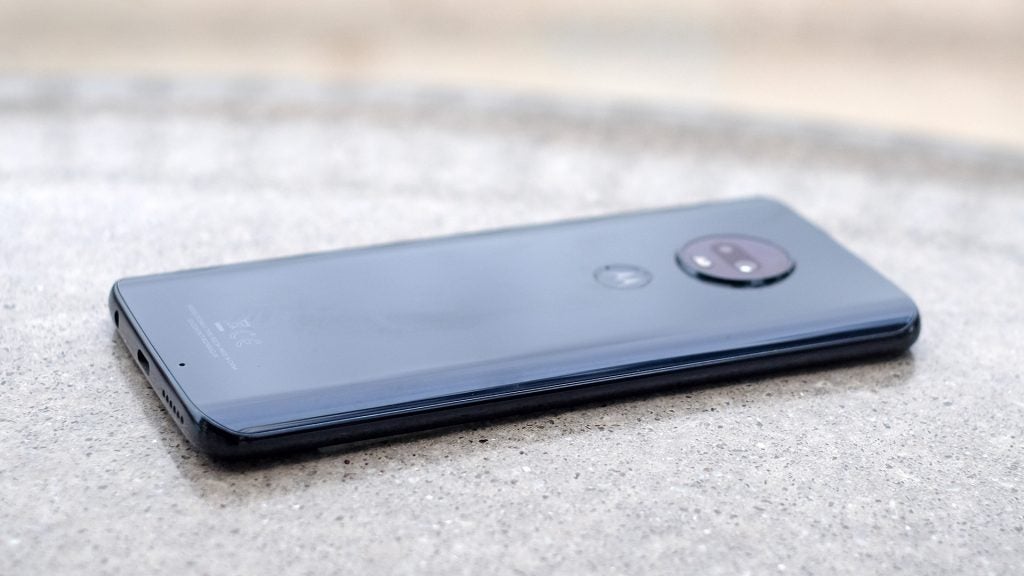
Motorola Moto G7 Plus — Design
The Motorola Moto G7 Plus is the top model in the G series this year, however, its build fundamentals have not changed significantly since 2018’s Moto G6 Plus.
Its back is curved glass, which charms eyes and fingers, and the sides are aluminium. There are much cheaper phones that use a combination of glass and metal, but true curved glass is still relatively rare in sub-£300 handsets.
Finishes have changed significantly, though. The Motorola Moto G7 Plus does not have quite the same light-reactive finish as the Moto G6 Plus. This dark blue version, in particular, looks more subdued. However, you can also get the Plus in a red and white if you want something bolder.
The red version is easily the most striking of the three, although I’d argue the black circle left by the camera housing doesn’t quite look right.
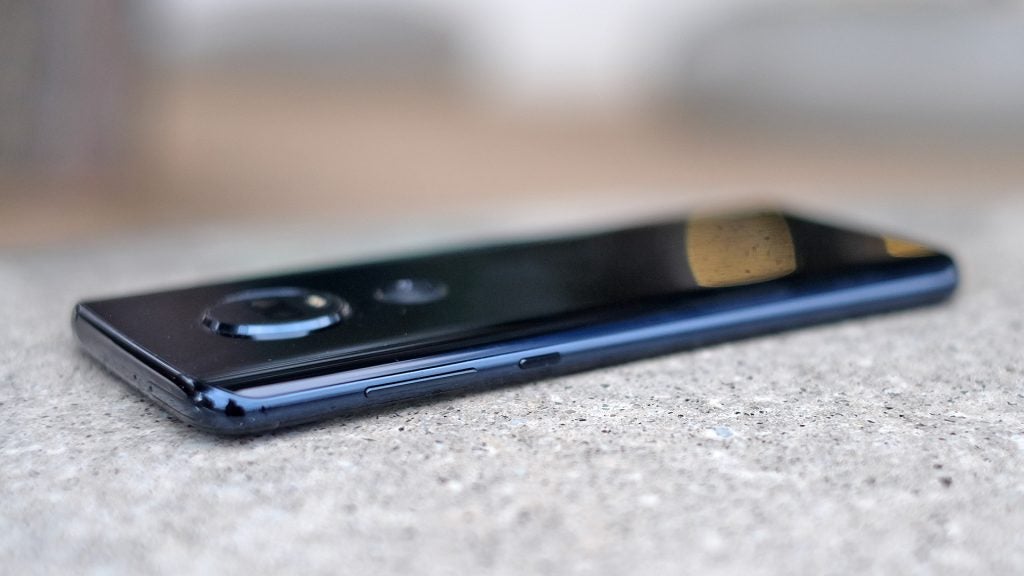
The Moto G7 Plus initially looks extremely similar to the slightly cheaper Moto G7. However, the Plus comes with a little added sparkle to its finish, with subtly brighter blue lines that appear at certain angles, and the back is less reflective. It’s perhaps the subtlest extra you get for the additional £30.
None of the Moto G7 phones are highly water resistant, but the G7 Plus does have a P2i water repelling layer that stops rain and any light spills from causing problems. Most affordable phones have no official water resistance at all, so even this light protection deserves credit.
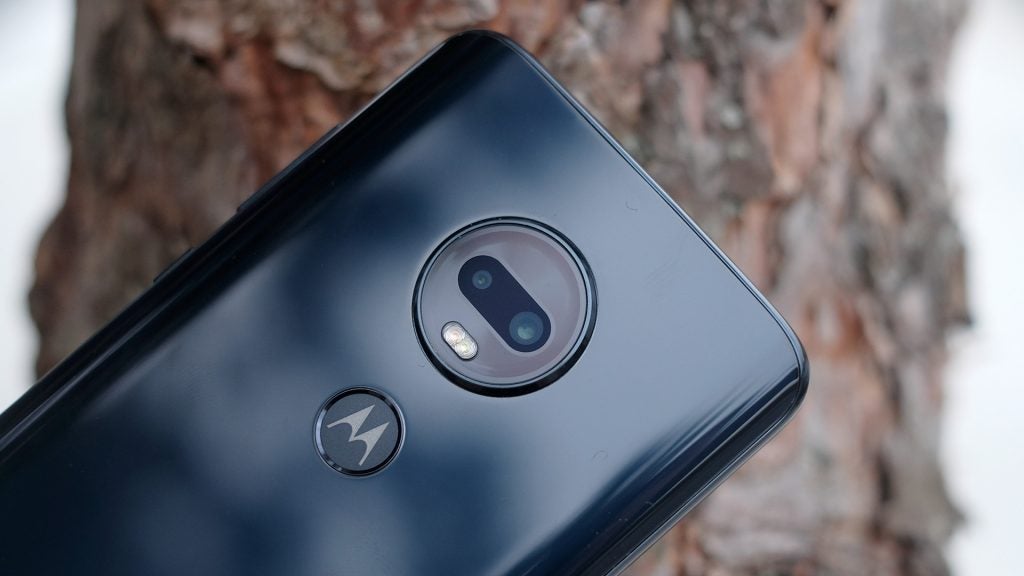
The Motorola Moto G7 Plus has a fast real fingerprint scanner, a solid 64GB of storage, 3.5mm headphone jack and USB-C charging. There are no glaring omissions. It even has NFC and an e-compass, although these may not feature in all variants across the world, so check before buying.
Motorola Moto G7 Plus — Screen
A screen notch is the clearest change to the design this year, and it is quite a dramatic notch too. Teardrop-style notches like this tend to be used to take up as little screen space as possible, gliding around the camera lens. However, the Motorola Moto G7 Plus’s is surprisingly large and looks like a cutesy cartoon eyeball set within the display’s border.
When Motorola first brought fingerprint scanners to this series, is did so clumsily. And now it has, arguably, done the same with the notch. The Moto G7 Power’s wider notch seems far less apparent, less obvious.
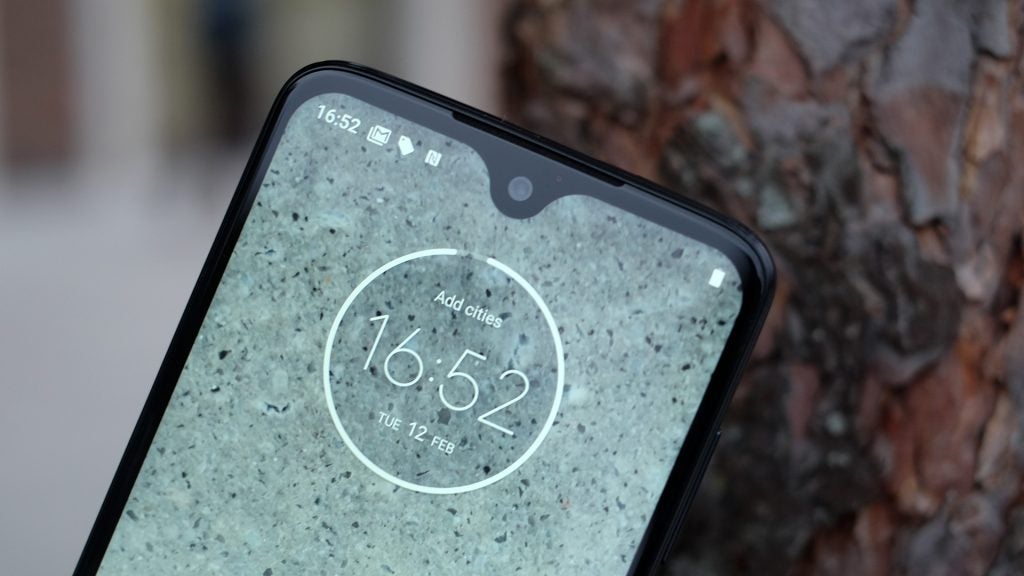
Of course, it’s all subject to perception. At first, I wasn’t keen on this look at all but have since softened to it. Moto G phones have always had a friendly curviness to them. It is perhaps suitable that the notch does too. It also makes the Motorola Moto G7 Plus’s front far more distinctive and recognisable.
Some have also complained about the Motorola logo on the phone’s lip. But it’s so subtle in most lighting, getting upset is a waste of emotion.
The Motorola Moto G7 Plus’s screen quality is great. Colours are vivid, contrast is punchy enough and resolution is high enough that anyone seeing pixelation in fonts is trying too hard.
Purists will find limitations in the colour gamut, and the max brightness doesn’t compete with phones three times the price. However, the only meaningful comparison is with phones like the Honor 8X and Honor Play. Their screens may be slightly better in some respects, but the part that leaps out is their approach to notches. The Motorola Moto G7 Plus has the narrowest, but also the deepest, of the lot.
You cannot go wrong buying any of these three phones — this is where advice falls apart and you have to opt for the one with the benefits that match your tastes.
That said, the Motorola Moto G7 Plus also has three colour modes that let you choose between “natural”, vivid and saturated colour. This extra choice is welcome.
Related: Best cheap smartphone
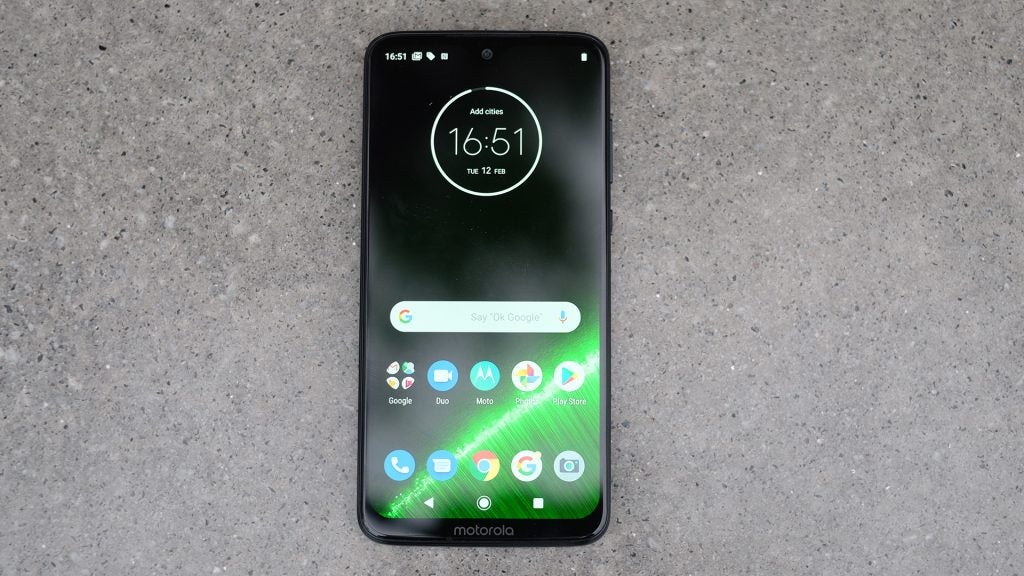
Motorola Moto G7 Plus — Software
The Motorola Moto G7 Plus has mostly excellent software, just like the other phones in this range. For quite a while people called the Moto G Android software “vanilla”.
It isn’t, but it is so close to the look and feel of stock Android, it might as well be. You swipe up from the home screen to get to the apps drawer, and this, in turn, has a blank translucent white background, just like a Google Pixel phone.
Day-to-day use feels smooth and sharp in all the right places, effectively minimising the difference between a Motorola Moto G7 Plus and a much more expensive handset. It has the latest Android 9.0 software too.
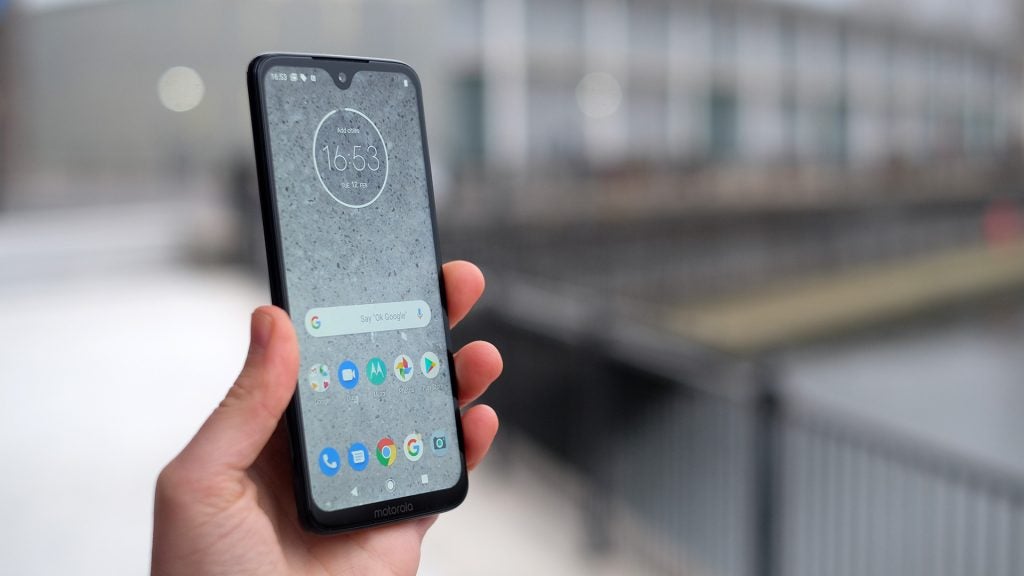
However, not every part is in place. Android 9.0 introduced Digital Wellness features that let you monitor how you use apps, and set time limits for any you tend to overuse. I’ve set limits for Twitter and YouTube in the past because, guess what, spending too long poring over them does your brain no good.
The Motorola Moto G7 Plus does not have these features yet. However, I would not be surprised if Motorola adds them in an update.
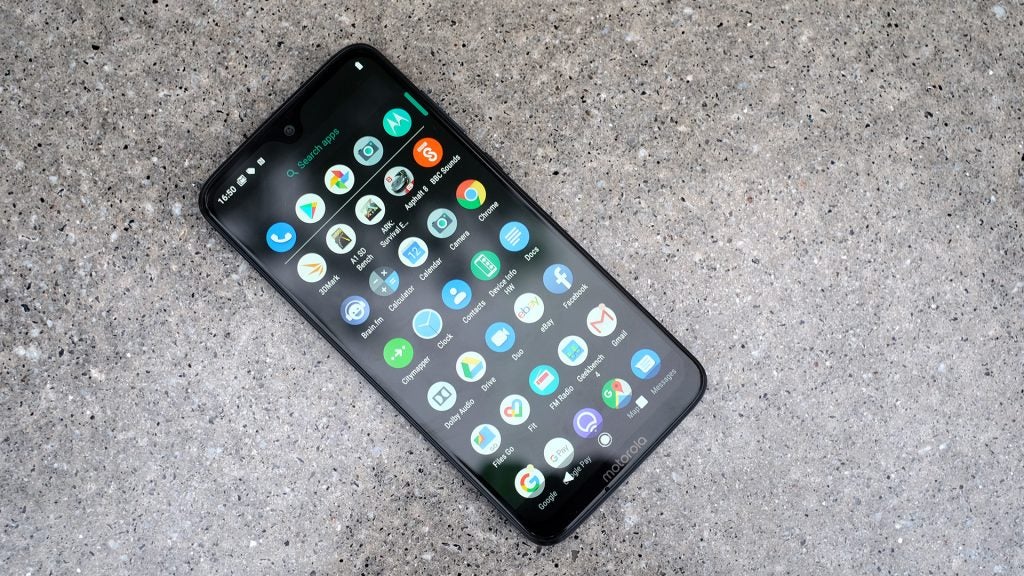
Motorola Moto G7 Plus — Performance
The Motorola Moto G7 Plus is the one member of the 2019 G7 family that doesn’t use a Snapdragon 632 processor. It has a higher-end Snapdragon 636 CPU, just like the smaller, (at one time) pricier Motorola One.
Oddly enough, the Motorola Moto G7 Plus’ Geekbench 4 score is almost identical to the Moto G7’s, with 4590 points to 4691. This does not get to the root of the real difference, though, which is the GPU.
The Motorola Moto G7 Plus has an Adreno 509 graphics chipset, significantly more powerful than the Adreno 506 of the Moto G7. 3D Mark is one of the best ways to get an empirical view on this. It’s a relatively “pure” graphics/gaming test.
In Slingshot Extreme the G7 Plus scores 945 points, the G7 512.
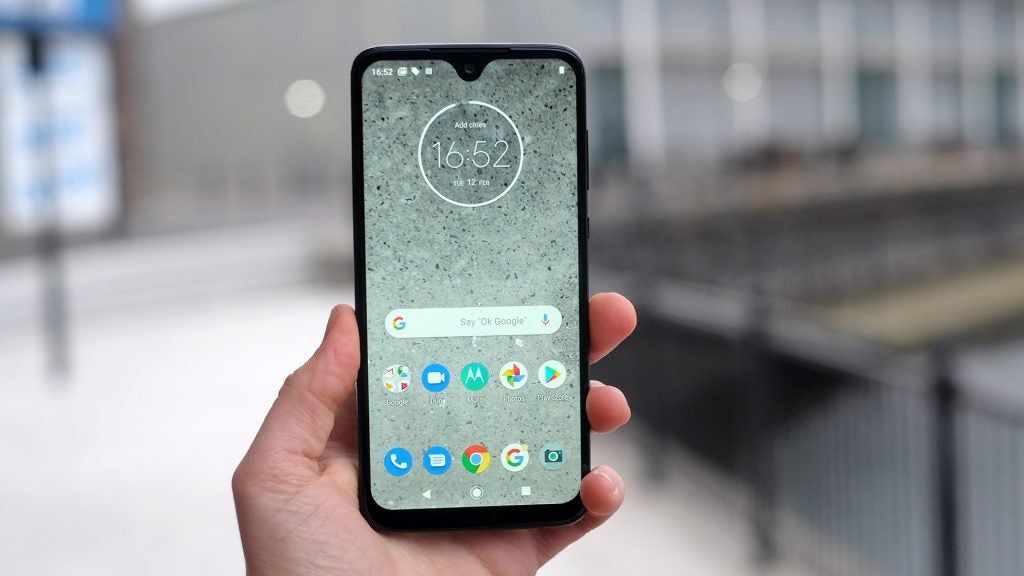
What this means in practice is the G7 Plus is significantly better at handling high-end games that really start to tax the Moto G7. These include PUBG, Ark: Survival Evolved, and other games that are similar to, or ports of, console titles.
Unlike the G7, the Plus lets you run Ark with graphics settings higher than “Low”, and Asphalt 8 runs more smoothly at High graphics.
However, don’t start thinking the Motorola Moto G7 Plus has a true high-end processor. This is a mid-range chipset. PUBG, for example, still only lets you use “Low” graphics. Check out the Honor Play if you want even better performance.
The Plus’s speaker is quite impressive for a “budget” phone, though. There’s just one driver on the bottom edge, but both max volume and the (limited) power of the lower frequencies are well above average. Sound is also more open than that of the Xiaomi Mi 8 Lite.
Motorola Moto G7 Plus — Camera
The Motorola Moto G7 Plus has the most impressive-sounding camera hardware of the G7 family. There are two cameras on the back, led by a 16-megapixel Sony IMX519 sensor and optically stabilised f/1.75 lens. The equivalent of a pair of Nike trainers, this is top-brand stuff. You’ll find the same sensor in the OnePlus 6.
Motorola has also sped up the camera since the last generation’s launch, making it more fun to use.
Related: Best smartphone

However, it is not that huge an upgrade from last year’s Moto G6 Plus. And Motorola has not made good use of its optical image stabilisation. This buffers the camera, to let it use longer exposures without blurring. It’s definitely there. You can even tell simply when turning the Motorola Moto G7 Plus while using the camera app. Motion looks smoothed.
Night image quality is only slightly better than the Moto G7’s, though. And even when shooting manual, maximum exposure time is 1/6 of a second. I’ve also noticed a surprising amount of detail smoothing even when forcing low ISO sensitivity in this manual mode.
The Xiaomi Mi 8 Lite is much better at increasing the dynamic range and brightness of dark scenes. There’s also no version of the ultra-smart low-light mode that has radically improved the night image quality of some phones in the last 18 months.
Phones at this price don’t tend to have these smarts anyway, yet. However, the Motorola Moto G7 Plus largely maintains the quality we saw last year. I hoped for a little more from the optical stabilisation.
In other respects, this is a great setup, though, and highly competitive in this class. Its Auto HDR is quick and very effective, sharpness is good right into the corners. Side-by-side with Moto G7 images, the Plus also tends to render more fine detail, although it is also a little prone to some mild purple fringing. Oddly, the Moto G7’s dynamic range tweaking is actually better than the Plus’s at present, which can lead to slightly blown highlights or dull looking images when there’s high light contrast. Hopefully, Motorola will improve this in an update.
The Moto G7 Plus captures more detail than the Xiaomi Mi 8 Lite, particularly in mid-level and low lighting. It’s only in truly dark scenes that the Xiaomi gets an edge thanks to more aggressive software enhancement.
The Motorola Moto G7 Plus also has a secondary 5-megapixel sensor for adding background blur to images. Its mode in the camera app is pickier than most when it comes to the scenes it’ll attempt to blur, but the results are solid enough.
Related: Best camera phone

 Night performance is decent for an affordable phone, but not one with OIS
Night performance is decent for an affordable phone, but not one with OIS




 Shot using the background blur Portrait mode
Shot using the background blur Portrait mode
 Shot using the background blur Portrait mode
Shot using the background blur Portrait mode


Despite OIS, the G7 Plus’s low light performance is still far from perfect
Like last year’s G6 Plus, the phone can also shoot video at up to 4K resolution, 30 frames per second. At this resolution, it uses optical stabilisation to make any hand judder less apparent. You need to drop down to 1080p (30/60fps) to get software stabilisation, which removes even more motion judder.
The selfie camera offers perhaps the clearest difference in quality between the G7 and G7 Plus though. Here you get a 12-megapixel front camera with fairly large (for a selfie camera) 1.25-micron pixels. It’s the same Omnivision sensor used for the main rear Moto G7 camera.
Where the selfies from the Moto G7, and most other phones around the price, tend to let fine details turn into vague mush in lower light, the Plus retains a lot.
The Moto G7 Plus has one of the best camera setups you can get at the price. And it has not just one good camera sensor, but two. That OIS could be used more effectively and the lack of an attempt at a more aggressive night photo mode makes this update seem a little conservative. The HDR algorithms could do with a tweak too.
Motorola Moto G7 Plus — Battery Life
The Motorola Moto G7 Plus has a 3000mAh battery. Again, this sounds conservative. If you want a phone that will last an unusually long time between charges, there’s only one Moto G7 phone to buy, and it’s not this one.
Motorola’s Moto G7 Power has a 5000mAh battery, lasts two full days and is cheaper too. It’s less powerful, the cameras aren’t as good and the screen is of a lower resolution, though.
The Plus is a classic example of “good enough” battery life. Subjected to my normal use, which includes a few hours of podcast streaming, some WhatsApp and light browsing, it ended day one with about 30 percent charge left. And finally gave up at around 1pm the next day.
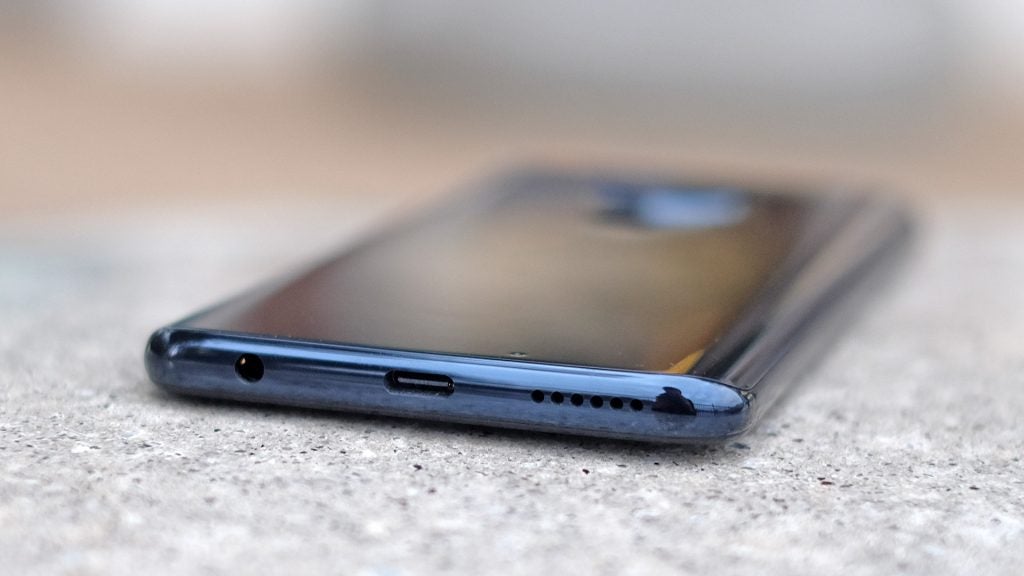
There’s little chance many of you will get the G7 Plus to last two days, but there is a bit of battery buffer to see you through days when you’ll want to use the phone more, such as those with long train journeys.
The Motorola Moto G7 Plus does not have wireless charging, as in previous years, but it does have a higher-power 27W Turbopower charger. Other phones in the range have an 18W one. Unusually, it also uses a USB-C to USB-C connector. This makes losing it all the more irritating, as these cables are much less common (a side effect of the switch from Qualcomm’s Quick Charge to PD fast charging).
However, it is handy if you have a new laptop with USB-C connectors instead of old full-size USBs. And you can use it to leech power from, or supply power to, other devices. Which gets the juice depends on the order they’re plugged in (or the settings tapped on the phone).
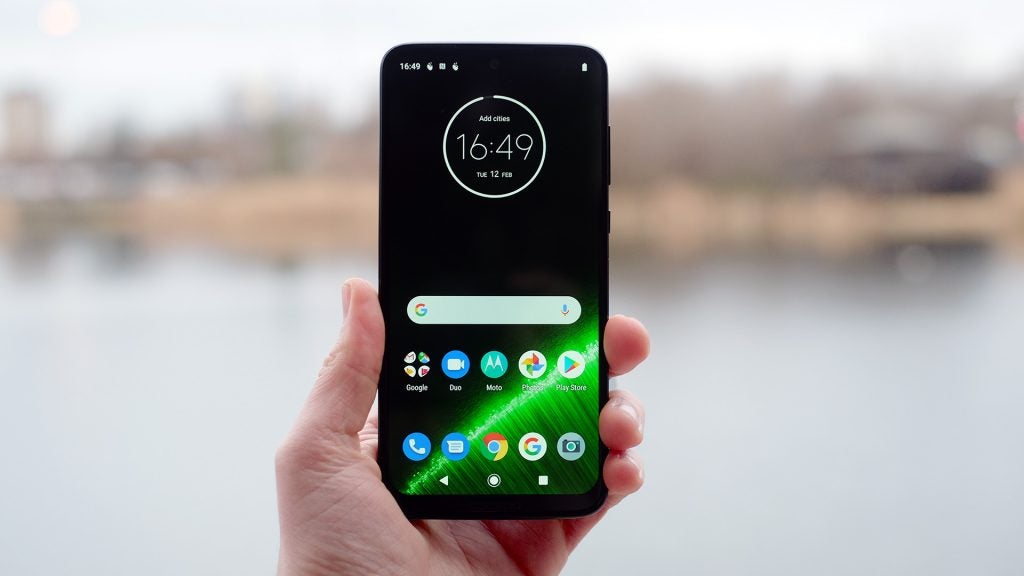
Should I buy the Motorola Moto G7 Plus?
Motorola has not altered its strategy much with the new Moto G7 range. The software is clean, the hardware tasteful and the prices cover a broad range of budgets.
Compared to the Moto G7, the Plus offers more dynamic-looking finishes, more power and a better selfie camera, which is more than enough to justify the extra cost.
The Moto G7 Power and Xiaomi Mi 8 Lite are two more interesting alternatives, though. If you treat a phone like a tool and don’t need a higher-end camera, the benefits of the Power’s ultra-long battery life are big.
And the Xiaomi Mi 8 Lite? This new-to-the-UK contender is more powerful still and can often be found for a little less money. However, the clean and tasteful design seen throughout the hardware and software makes the Moto G7 Plus easy to recommend to virtually any buyer shopping in the £200-300 range.
How we test phones
We test every mobile phone we review thoroughly. We use industry standard tests to compare features properly and we use the phone as our main device over the review period. We’ll always tell you what we find and we never, ever, accept money to review a product.


